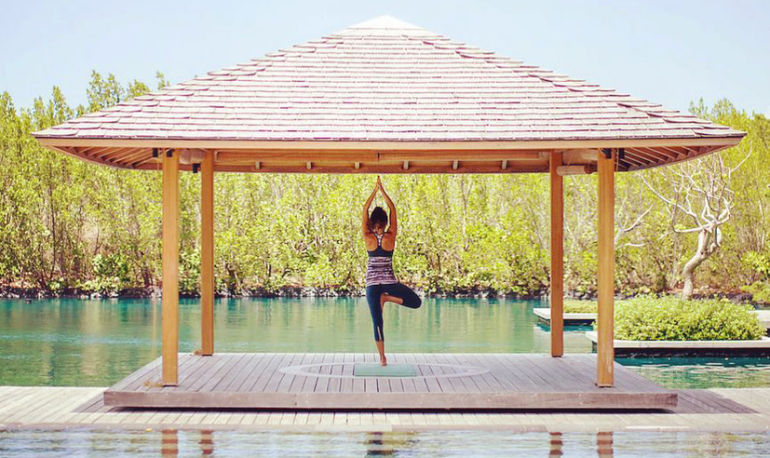Photo by Karen Wise
There is something quite comforting knowing that everything in the universe has its place in time – that nature has intended for a reason.
A simple moment – when I walk to my local farmers market in the summer months there is nothing like seeing the picture-perfect pints of bright strawberries, blueberries, blackberries and raspberry’s. They are captivating the senses and sending delicious energy through the body. But when that’s not available at your winter farmers market, don’t fret. There is always something delicious and nutritious in season and readily available, no matter where you live or what time of year.
Eating what’s in season is what our bodies have adapted to for generations. What’s happening in nature at this very moment has the nutrients and immunity properties needed to survive. Eating in season can be an eye-opening experience that can satisfy the senses and bring explosions of new flavours and textures into your life.
Here are a few reasons why I am inspired to visit my local farmers market – I hope they inspire you.
Flavor
Produce that has been able to fully ripen in the sunshine tastes wonderful! Nothing says optimal flavour like crisp, fragrant, juicy and colourful. Those fresh-picked heirloom tomatoes can taste like candy. They can even be eaten like an apple.
Nutrition
Plants get their nourishment from the sun and soil they grow in. Seasonal produce is picked when it has fully developed, leaving it packed with nutrients at it’s peak. They are fresher and contain more vitamins, minerals, phytonutrients, antioxidants and fiber that will help maintain a healthier you. Compared to eating items that are grown in unnatural conditions or travel miles to get to your grocery store, in-season foods are always at their best.
Environment
Seasonal produce can grow with little human assistance, using the sun and soil as much as possible. For example; pesticide, herbicide and genetically modification. We know the harmful effects these toxic products have on our body. Seasonal food is more likely to be produced locally, reducing our toxic load on the environment via “food transport”.
Economy
Not only are you helping the environment, but also you are helping yourself save money. Seasonal food is much easier and cheaper for the farmer to produce and who would rather sell the produce for a lower price, than not at all. Additionally, local and seasonal food is always cheaper than food grown in hothouses and needs to travel hundreds of miles to get to your local grocery store. Usually the price is about double for items that are not currently being harvested.
Community
Support the local farmers and local industry. Getting to know where your food is coming from, who is growing your food and how they do it makes you feel more connected to the whole process. Farmers markets showcase community and encourage us to make a difference in the world regarding our recent food practices and environment. Let’s do our part and support sustainability in our communities.
Home Cooking
Eating seasonally forces us to cook more – and there is nothing you could do better for your body. When you are in the kitchen you are in control. That be of which cooking oil you choose, the amount of sugar added and you are consciously making healthier choices for your body. Don’t forget to add a very important ingredient into your food, love. By adding this energy into your cooking you are nourishing your friends, kids and family with this special ingredient and creating a gratifying experience.
Creativity and Variety
I love getting creative at the market! There is always something new popping up every week. Take the chance to buy something you have never seen or heard of before, take it home and try something new! Not only is creativity good for the brain but variety is good for the body. My teacher once said that on average we eat the same 15 foods, well this stuck with me! By changing our menu to what’s available we are also avoiding food intolerances and allergies.
Organic/Pesticide free
When food is grown outside of its natural season it needs assistance and as mentioned before this is where all the toxic ingredients come into play. By choosing local, seasonal food you are avoiding these harmful toxins. Many farmers cannot afford to go through the organic certification process, meaning they cannot label their foods as organic but still follow natural and healthy growing practices. So no need to be as careful shopping at the market for “organics” than you do at the grocery store.
Support of Seasonal Needs on The Body
The natural cycle of produce is perfectly designed to support our health.
In Spring, focus on leafy greens as they help us alkalize and detox after a long winter of heavier foods. They also represent the new growth of the season – important in our Mind-Body connection. In the summer, we need cooling foods and to stay hydrated. Berries, mint, cucumber and watermelon do the trick. For fall, turn towards more warming foods such as carrot, sweet potatoes, onion and garlic. Come winter, turn even more exclusively toward warming foods. All animal foods fall into the warming category; fish, chicken, beef and lamb. Warming spices include ginger, peppercorns and mustard seeds.
Building a lifestyle around seasonal food facilitates the body’s natural healing process.
Harmony
Living in tune with nature is a gratifying and rewarding experience. You connect with the earth, the moon and create a deeper understanding of our environment. Following these practices we can live in balance with our surroundings rather than confusing them with living in conflict with nature. Embrace the natural rhythm of nature. Trust and respect our food, as it is nourishing and good for us.
Wednesday Wellness wisdom from Meghan Trompetter, Nutritionist & Guide for Breathe in Life













 Photo: @amanyara_resort
Photo: @amanyara_resort
